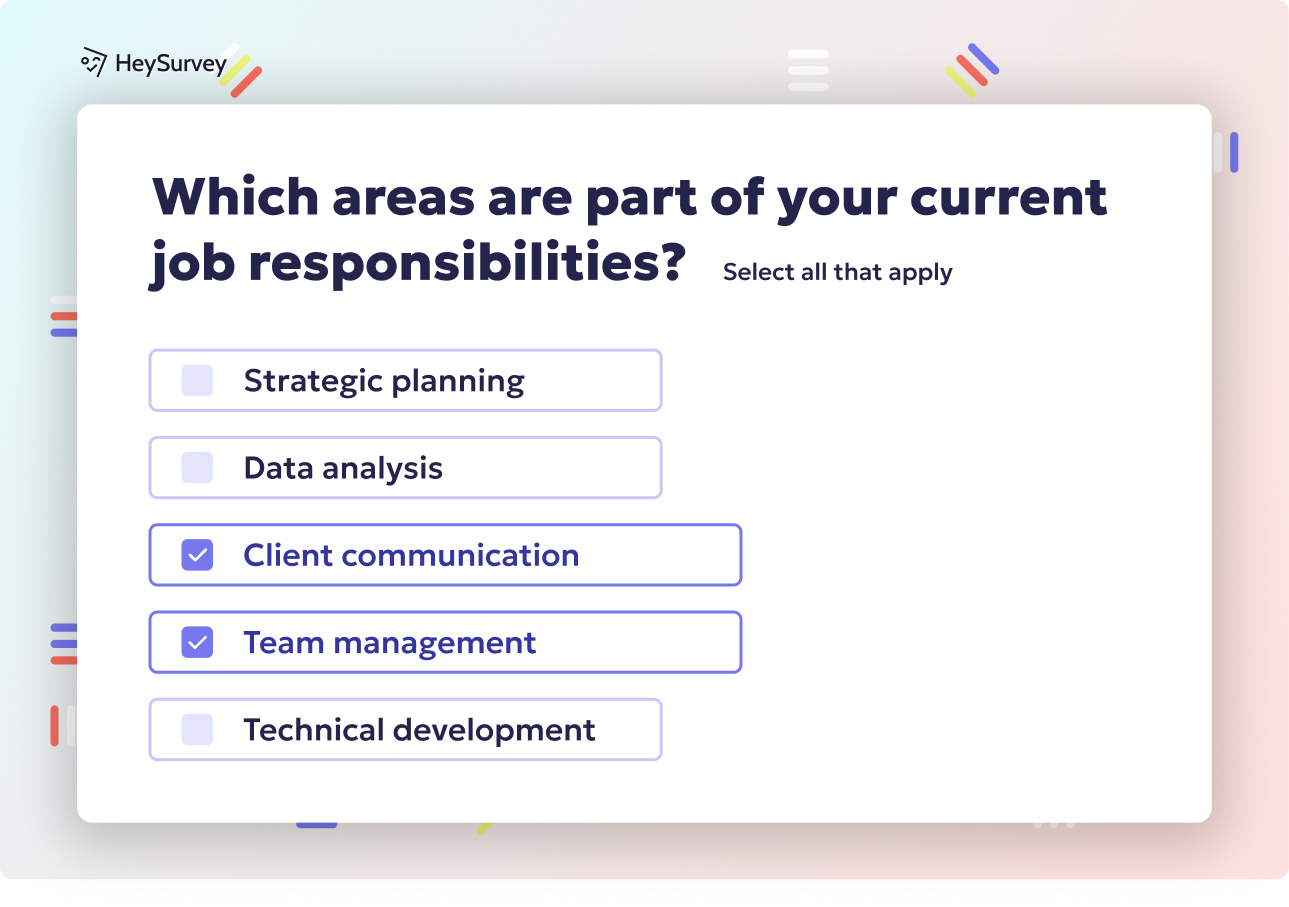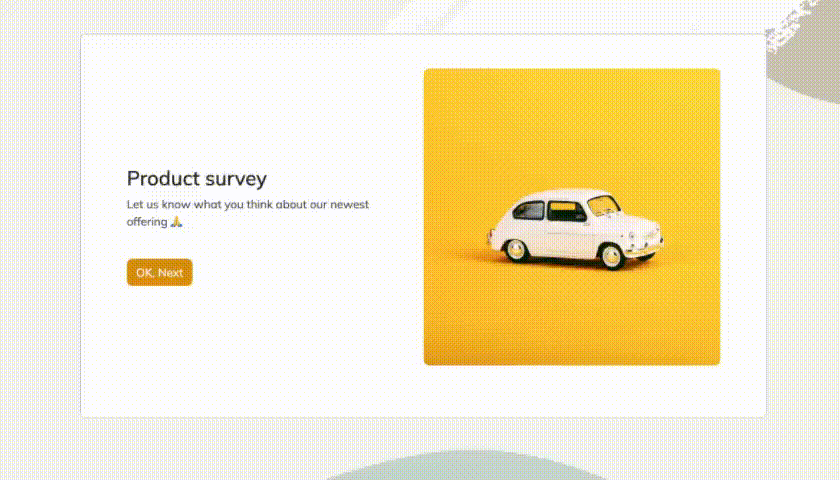31 Psychographic Survey Questions: The Complete Guide
Discover 30+ expert psychographic survey questions with examples to unlock customer motivations, lifestyle insights, and buying triggers.
Move over, boring demographics. Psychographic survey questions unlock the real “why” behind customer choices. Instead of just who they are, psychographics dig into what makes people tick: interests, opinions, dreams, quirks, and priorities. Mastering psychographic data means your business can transform audience segmentation, launch smarter products, sharpen ads, and guide customers along the perfect journey. Curious when to use psychographic surveys, or hunting for examples of psychographic questions? Read on for the benefits, sample questions, and expert advice you need to supercharge your next survey.
Lifestyle & Interests Survey
Why and When to Use This Survey Type
Lifestyle psychographic surveys go way beyond basic customer data, offering priceless insights into how your audience fills their days and what brings them joy. When you know if your customers are marathon runners, indie gamers, sudoku lovers, or Netflix bingers, you can shape more relatable personas and deliver content that sticks.
You’ll benefit the most from interest-based segmentation at a few critical business moments:
- Early persona research, when you need to discover new market segments without guessing.
- Periodic brand health checks, to see if your brand’s vibe still matches customer lifestyles.
- When validating a content or influencer strategy, ensuring it genuinely syncs with your audience’s preferences.
By asking the right hobby survey questions, you’ll discover partnership and sponsorship opportunities that fit your crowd’s real-world interests. Plus, you’ll uncover fresh ideas for product features, themed campaigns, and storytelling that truly resonate.
These surveys make sure your messaging isn’t just noise in the background. Instead, you’re speaking directly to what matters most to your market. Want to stand out from the crowd? Tap into free time routines, weekend rituals, and recreation habits—not just the usual age or income stats.
Sample Questions
- Which activities do you enjoy most during your free time?
- How often do you travel for leisure each year?
- Which of the following hobbies best describe you? (Select all that apply)
- On a typical weekend, which statement best describes your routine?
- How important is staying physically active to you?
Interest-based segmentation powered by lifestyle surveys isn’t just fun—it’s fundamental to modern marketing. It sets you up to deliver personal, helpful, and memorable content every time.
Psychographic segmentation enhances consumer understanding by uncovering hidden attitudes and motivations behind purchasing decisions. (conjointly.com)
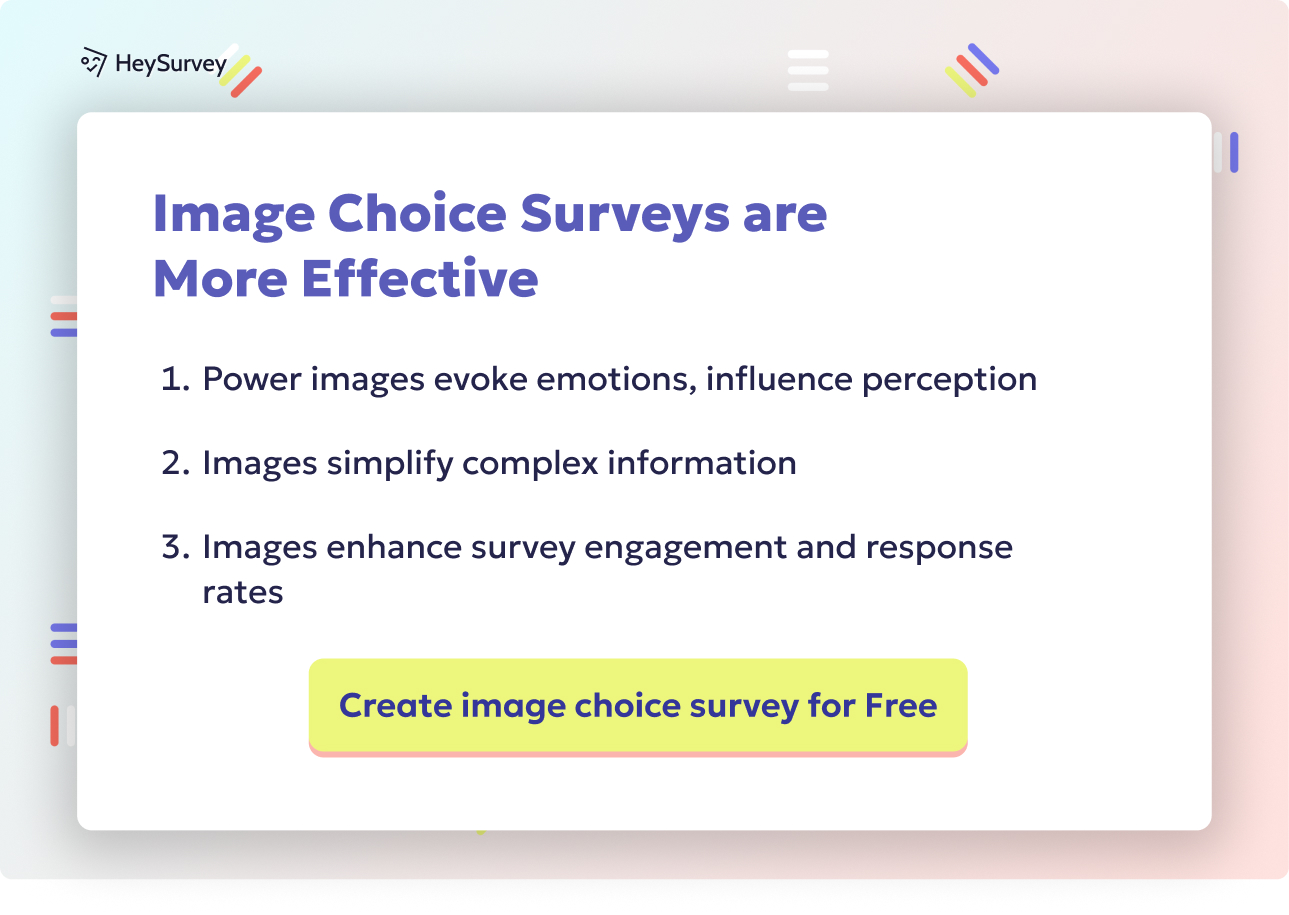
How to Create Your Psychographic Survey with HeySurvey in 3 Easy Steps
Getting started with HeySurvey is a breeze—even if you've never built a survey before. Follow these three simple steps and you’ll have your psychographic survey up and running in no time!
Step 1: Create a New Survey
- Head over to HeySurvey’s dashboard and click Create New Survey.
- Choose either Empty Sheet to start totally from scratch or pick a Pre-built Template if you want a fast track with pre-made psychographic survey question examples.
- Give your survey a name—something like “Customer Values & Lifestyle Survey” to keep things clear behind the scenes.
That’s it! You’re now inside the Survey Editor, ready to craft your questions.
Step 2: Add Your Questions
- Click Add Question at the top or between any existing questions.
- Pick the question type that fits best: single-choice, multiple-choice, scale, open text—you name it.
- Type in your question text (e.g., “Which activities do you enjoy most during your free time?”) and add any helpful descriptions.
- For multiple-choice questions, add your choices and decide if respondents can select one or many options. Consider making important questions required to avoid missing data.
- If you want a snazzy touch, add some images from Unsplash or Giphy to spice up your questions and keep people engaged.
Feel free to duplicate similar questions for speedy setup or use branching logic to customize which questions show depending on previous answers. The possibilities are endless!
Step 3: Publish Your Survey
- Once you’re happy with your questions, click Preview to see how your survey looks on different devices.
- Tweak fonts, colors, or layout in the Designer Sidebar if you want to add your signature style or brand vibe.
- When everything feels just right, hit Publish and get a shareable link to send out to your audience.
Note: You’ll need to create a HeySurvey account if you don’t have one yet to publish and view your results, but signing up is quick and free!
Bonus Step 1: Apply Your Branding
- Customize your survey by uploading your logo to the top left corner.
- Choose colors, fonts, backgrounds, and question card styles that match your brand aesthetics.
- Add animations or adjust layout settings for a smooth, engaging respondent experience.
Branding your survey not only looks polished but also builds trust with participants.
Bonus Step 2: Define Survey Settings
- Set start and end dates to control when your survey is live.
- Limit how many responses you want to collect—handy for quick runs or pilot tests.
- Add a Redirect URL to send participants to a thank-you page or special offer after survey completion.
- Decide if you want respondents to see results summaries when they finish.
Fine-tuning these lets you control the survey timing and flow with zero hassle.
Bonus Step 3: Use Branching Logic for Smart Surveys
- Customize your survey path by defining which question appears next based on previous answers.
- For example, if a respondent says they rarely travel, skip travel-related questions to keep things relevant and snappy.
- Add multiple endings based on responses to leave everyone with a tailored final message or call to action.
Branching turns your survey into a conversational journey, making the experience feel personal and respectful of respondents’ time.
Ready to start? Just click the button below to open a HeySurvey template packed with all the psychographic questions from this guide—and watch your insights soar!
Values & Beliefs Survey
Why and When to Use This Survey Type
Values-based segmentation is a game-changer for brands with a clear mission, whether you’re championing green tech or standing for equal pay. When your organization’s purpose aligns with your customers’ beliefs, you build loyalty that outlasts price wars or fancier features.
These surveys come to the rescue in several scenarios:
- Launching or refreshing a cause-driven campaign that puts ethics front and center.
- Fine-tuning crisis communication by understanding which company actions matter most.
- Planning CSR initiatives that reflect real priorities, not just corporate buzzwords.
Shaping your business around ethical consumer insights means listening first. When your audience puts high value on social causes or sustainability, you get a green light to shout your impact from the rooftops. Even more importantly, if their core beliefs don’t align, you can pivot before investing heavily in the wrong initiatives or messages.
Belief survey examples also help you understand the spectrum of political or social attitudes in your community. Are your customers passionate about transparency, devoted to innovation, or eager for affordability? Their values will guide how they see your brand—so it’s smart to ask.
Sample Questions
- How strongly do you agree that brands should support social causes?
- Which environmental issues concern you the most?
- Rank the following company qualities in order of importance: transparency, innovation, affordability, social impact.
- When choosing a product, how much weight do you place on ethical sourcing?
- Which statement best reflects your political or social outlook?
Using values-based segmentation ensures every campaign and product feature comes from a place of authentic connection. It makes your brand impossible to ignore—or to copy.
Psychographic survey questions delve into individuals' values, interests, attitudes, and lifestyles to uncover the underlying motivations driving consumer behavior. (sightx.io)
Personality Traits Survey
Why and When to Use This Survey Type
Psychographic personality profiling gives marketers superpowers. Knowing if your buyer is naturally cautious or a big risk-taker lets you hit the right emotional notes in copy, visuals, and UX. It’s the method behind brands that feel like old friends—always knowing just what to suggest and how to say it.
Dive into trait-based segmentation when you want to:
- Experiment with tone, voice, and design that feels custom-tailored to all personality types.
- Personalize onboarding, from product demos to welcome emails, based on personality clues.
- Match users with the perfect influencer partners or brand advocates.
Personality data is a goldmine for creating gamified experiences that draw people in, or for suggesting the right next feature at just the right time. Whether you use the Big Five model, DISC, or your own custom framework, a personality survey question can tell you if your audience craves spontaneity, detail, bold action, or security.
Don’t just guess. Let your users tell you their preferred approaches to risk, decision-making, and even product adoption. That way, you can stop sending the same nurture sequence to the risk-loving innovator and the cautious planner.
Sample Questions
- I consider myself… (Introverted / Extroverted / Ambiverted)
- How comfortable are you with taking risks in everyday life?
- When faced with a decision, do you rely more on facts or feelings?
- Do you prefer detailed plans or spontaneous action?
- On a scale of 1–5, how open are you to trying new products early?
When you lean into psychographic personality profiling, you don’t just market—you build authentic, thumb-stopping brand experiences.
Motivations & Goals Survey
Why and When to Use This Survey Type
Unlocking what drives your customers is a critical step toward smashing your growth targets. An effective customer motivation survey reveals both the short-term wins and big-picture dreams that shape purchasing intent. With this insight, brands can craft incentives and journeys that feel like plug-and-play solutions to each customer’s needs.
When is the best time for these surveys?
- Right before new product ideation sprints so your next feature truly solves a real problem.
- Ahead of pricing experiments or upsell strategies, ensuring they align with true motivators.
- When mapping the customer lifecycle, making sure every milestone speaks to actual ambitions.
These goal-oriented psychographic questions don’t just inform product and marketing—they make you an ally in your customers’ personal progress. You’ll understand which obstacles are holding them back and which motivators pull them toward the finish line, so you can nudge or reward them at exactly the right moment.
Understanding why people buy (and why they sometimes don’t) turns every campaign into a strategic conversation about real value. This is how brands turn casual buyers into true fans, from the welcome email through to product evangelism.
Sample Questions
- What is your primary goal when using [product category]?
- Which of the following motivates you most to upgrade a service?
- How do you measure personal success in this area of your life?
- What obstacles prevent you from achieving your goals?
- Rank these incentives (discounts, convenience, status, community) in order of influence.
The next time you plan a launch or iterate on an offering, leverage goal-oriented psychographic questions to find new opportunities for delight and differentiation.
Psychographic surveys, by delving into consumers' values and lifestyles, enable brands to craft personalized marketing strategies that resonate deeply with target audiences. (cmswire.com)
Buying Triggers & Shopping Preferences Survey
Why and When to Use This Survey Type
Ever wondered why customers fill carts and ghost, click “buy now” in a flash, or only shop with a discount code? Welcome to the world of buying trigger surveys—your backstage pass to the psychology behind purchase decisions. By mapping out what actually nudges your audience into action, you plot the best routes to loyalty and repeat sales.
These insights matter most:
- Before a new product or brand launch, ensuring your trigger messages are irresistible.
- During seasonal campaign prep, to tailor offers to shoppers’ rhythms and preferences.
- For churn analysis, pinpointing which obstacles make people hesitate or waffle at checkout.
With shopping psychographics, you can tell which shoppers crave social proof, who always price compares, and who impulse buys when there’s FOMO in the air. Each answer pulls back the curtain on your audience’s shopping DNA, so you can ditch assumptions and design killer conversion paths.
Never underestimate the power of asking impulse purchase questions—from cart abandonment to five-star reviews, you’ll finally know what clicks (and what doesn’t).
Sample Questions
- What usually prompts you to try a new brand?
- How frequently do you compare prices before purchasing?
- Which factors make you abandon an online cart?
- How important are peer reviews in your decision process?
- Describe the last time you made an impulse purchase—what influenced you most?
By leaning into shopping psychographics, every nudge or touchpoint in your funnel becomes way more effective—and less likely to get ignored.
Media Consumption & Communication Preferences Survey
Why and When to Use This Survey Type
Knowing how, when, and where your audience likes to hear from you is every marketer’s not-so-secret advantage. A media consumption survey question sorts casual scrollers from podcast fanatics and early-morning readers from late-night video bingers. These insights are priceless for omnichannel campaign planning and making every touchpoint feel like a VIP invite.
These questions shine in:
- Planning cross-channel campaigns so you never waste impressions on the wrong platform.
- Collaborating with influencers, podcasters, or YouTubers with natural overlap to your audience’s media habits.
- Timing your content drops for maximum visibility and engagement.
With communication preference psychographics, you’ll discover which formats (text, video, stories, email) and channels (Instagram, TikTok, newsletters) hit home for your brand. Plus, you can target ads or promotions when your audience is most active—and receptive.
Forget blasting the same announcement everywhere. Let your fans tell you where they hang out, how often, and what type of content they’ll actually share.
Sample Questions
- Which social media platform do you use most frequently?
- At what time of day do you typically consume video content?
- How do you prefer brands to contact you about new offers?
- Which type of content do you share with friends the most?
- How often do you read email newsletters from brands you follow?
A focus on media consumption survey questions ensures your voice cuts through the noise, not just adding to it.
Dos and Don’ts for Effective Psychographic Survey Design
Crafting the best practices for psychographic surveys is both an art and a science. A well-designed survey uncovers gold. A clunky, confusing one leaves you with guesswork. Here’s how to guarantee every result shines.
Do:
- Use neutral wording so every answer reflects genuine sentiment, not your bias.
- Segment logically by grouping similar topics for clarity.
- Employ branching logic, showing only questions relevant to each respondent.
- Test length on mobile and desktop, aiming for a breezy, no-fuss experience.
- Respect privacy—collect only what you need and safeguard responses diligently.
Don’t:
- Lead respondents with language that nudges them toward a certain answer.
- Overuse Likert scales—mix things up with ranking, open-ended, and forced-choice formats.
- Ignore cultural context; every region and group reads questions differently.
- Collect PII unless absolutely necessary (and always explain why).
- Overload with jargon that confuses or intimidates respondents.
Want to bump up participation? Offer a reward (discounts, early access, or prizes never hurt) and ensure a mobile-first design for quick, anytime completion. Your users will thank you—and so will your data dashboards.
For surveys that actually drive strategy, follow these how to write psychographic questions tips. And always sidestep the common mistakes for truly actionable insights.
Conclusion: Turning Psychographic Insights into Action
Psychographic survey questions let you build refined personas and deliver hyper-personalized marketing. You’ll also improve product-market fit and ensure every message, feature, and campaign is spot-on.
Next, dig into your data: run cluster analysis, connect findings to your CRM, and test new ideas based on real psychographic insights. Start building your psychographic survey today—and watch every customer touchpoint get smarter, sharper, and a lot more fun.
Related Market Survey Surveys
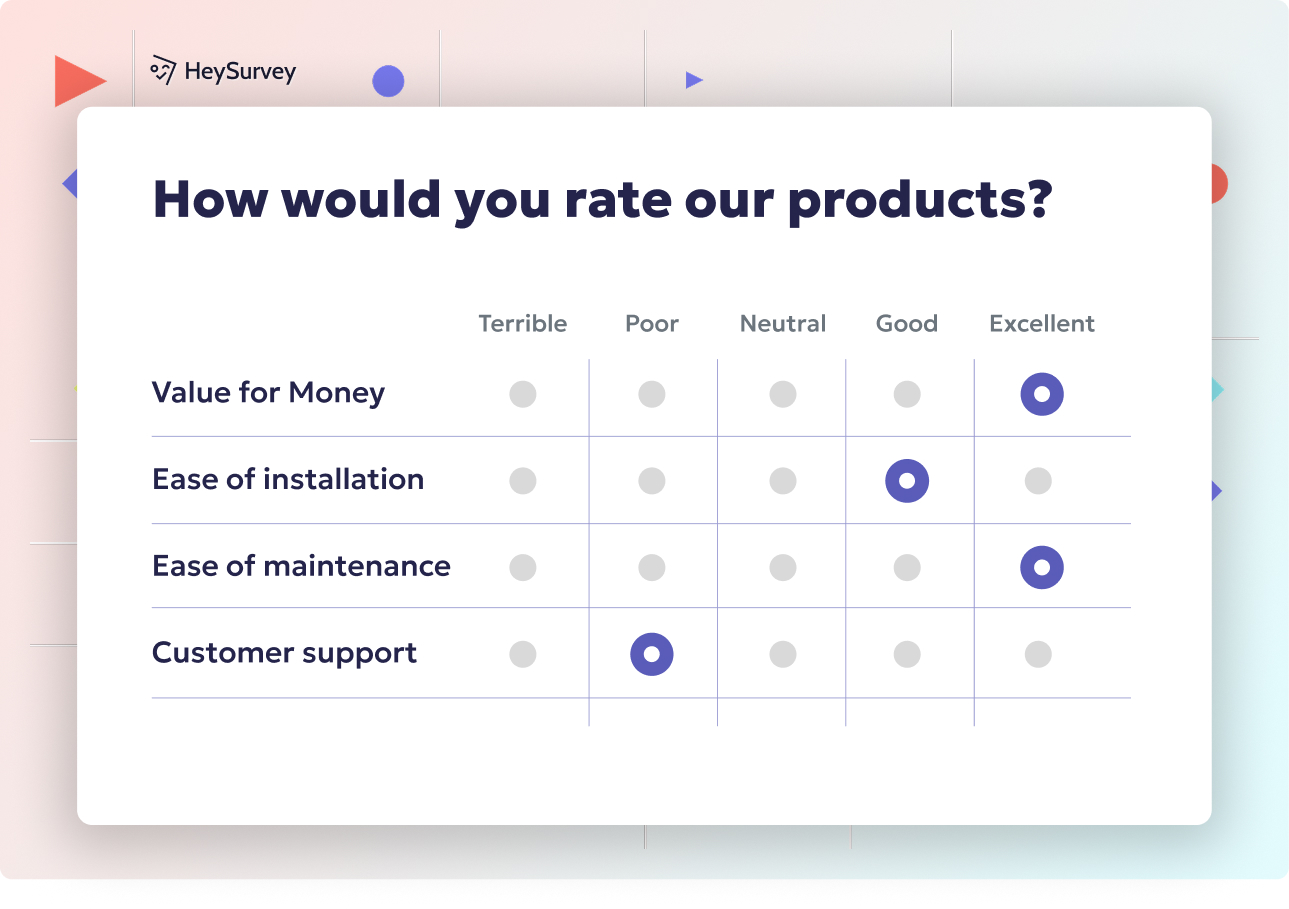
32 Market Research Survey Questions: Types, Samples & Tips
Explore 30+ market research survey questions with examples across types like CSAT, concept testin...

30 Coffee Survey Questions: The Complete Guide for Cafés & Brands
Discover 25+ expert coffee survey questions to boost cafés, product development, and brand insigh...
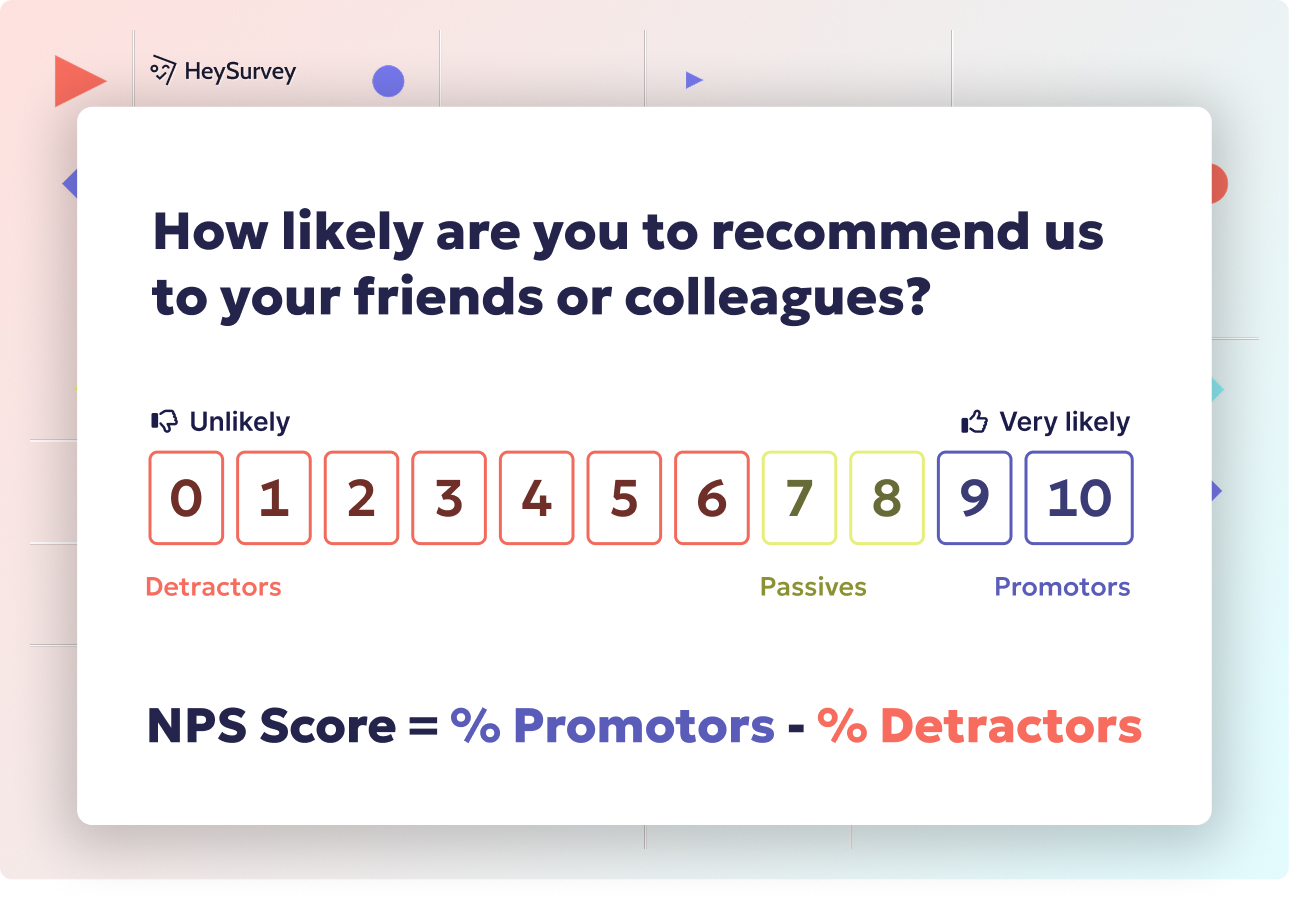
31 Content Marketing Survey Questions for Actionable Insights
Discover 25+ content marketing survey questions to gather actionable insights—boost audience alig...
